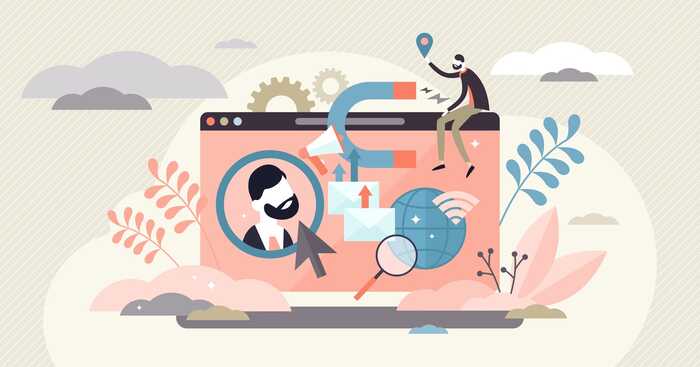How To Craft Buyer Personas That Actually Accomplish Something

If you’re a small to medium business and you’ve hired an agency (like us) to work with you, you might’ve been asked:
“Do you have buyer personas?”
If you don’t know what it is, or think they’re just for the big businesses and brands, don’t worry. This blog will help you get to grips with what they are, why they’re important, and how they’ll help you co-ordinate your traffic and sales in a positive, productive way.
So...
What is a buyer persona / customer / marketing persona?
The language might range a bit depending on who you ask, but according to Hubspot:
Buyer personas (sometimes referred to as marketing personas) are fictional, generalized representations of your ideal customers.
In essence, a buyer persona is a comprehensive profile of your ideal customer, fleshed from actual data, customer interactions, behaviours and goals, and a bit of informed guesswork. They may contain demographic information like:
- Age
- Gender
- Location
- Job role
- Income
- Disposable income
- Education
- Products bought often
They may also contain emotional and insightful information, like:
- Challenges
- Values
- Where they source their information
WHAT’S THE POINT OF CREATING A BUYER PERSONA?
Buyer personas means your marketing efforts are more targeted and focused than scattergunning and hoping you attract the odd customer. It enables you to understand your target audience better, to really get to grips with what they’re thinking, what they really want, and why.
Small businesses in particular can benefit from solid buyer personas because it means you don’t have to cast such a big net and target everyone in the hopes of securing a few leads. They help you determine who to target - the customers most likely to buy.
In a nutshell, they enable you to shape your offering, brand and messaging to best effect.

HOW DO I CREATE AN EFFECTIVE BUYER PERSONA?
That might sound daunting. Where do you begin?
With the right questions, creating a buyer persona from scratch isn’t as insurmountable a task as you’d think. Broken down into bitesize topics, the questions to ask when crafting a buyer persona (even from scratch) are:
Buyer persona section #1: demographics
The first few parameters are straightforward. What is your ideal customer's...
- Age range
- Gender
- Location
- Income
- Disposable income
- Education
Buyer persona section #2: profession
- Industry
- Job title
- Job seniority
- Size of company
Buyer persona section #3: challenges and obstacles
This section in particular is important because it enables you to better understand how to offer your customers solutions to their problems and content they’ll value and trust. By getting to grips with the uncertainties of your prospects, you can craft content that specifically addresses those fears. If you don’t know for sure about their challenges, don’t worry - we’ll get to research later.
- What are their problems / pain points?
- What is their situation?
- What is the status quo that won’t change without a solution?
- What keeps them up at night?
Buyer persona section #4: sources of information
If you can identify where your prospects go when they’re uncertain or have questions, you can better understand what influences their decision-making. It also offers insight into potential competitors - why do customers trust them? What are they doing right - and how can you do better?
- Do they frequent review websites like Tripadvisor?
- Do they make buying decisions before or after researching reviews?
- Are they frequent reviewers? Do they post reviews often?
- Do they source information from external sources, or friends and family (for example, Facebook?)
- Do they follow any authoritative blogs or news outlets in your industry?
Buyer persona section #5: purchase decisions
In addition to knowing how reluctant or eager a customer is to buy, these questions will help you (or your marketing team) craft better calls to action and sales funnels to cater to different buying behaviours.
- Do they buy regularly, or every now and again?
- Do they buy sporadically and make on-the-go decisions, or for a specific reason (for example, a product running low?)
- Are they the decision maker for purchases?
- What are their objections? Price, quality, longevity, shipping, or otherwise?

WHERE TO FIND DATA-DRIVEN ANSWERS TO BUYER PERSONA QUESTIONS
The value in these questions is clear - but where do you find the information to answer them accurately?
No one knows your potential customers better than you. In addition to insider knowledge and experience, there are places to go to find real data on your prospects - which in turn can inform your buyer persona.
Proper customer surveys are fantastic sources of insight, but you can start with general analytics to mine information without interacting directly with customers. Google Analytics and social media analytics offer valuable snapshots into current users and historical behaviour. Which webpages and posts do they press buttons on, and where do they spend the most time? Do they post opinions, or do they ask questions? What brands do they visit often?
You can delve even deeper with a section known as psychographics which cover personal values, personality and goals, but don’t worry about them if this is your first attempt at building viable buyer personas.
If you have the time and resource, customer and industry surveys offer live insight into your customer base with questions you can control. If you don’t have resource, a bit of time spent trawling related forums and chat rooms can offer valuable snapshots into customer opinions. However, you may have to spend some time digging for the insight you’re after.
Remember, it doesn’t matter if you can’t answer every single question. The goal is to build a workable picture of your persona. Spending weeks and weeks on building a character may not be the most efficient use of time - use data, insights and experience to answer as much as you can. This is a huge step ahead of many other small businesses.
BRINGING THE BUYER PERSONA TO LIFE
This is where the whole persona comes together.
Many businesses find it helpful to really connect with their customers by giving each buyer persona a name, and sometimes even a photo. This brings a persona to life and enables businesses to really get into the heads of their ideal prospects.
Unusually, gimmicks are perfectly acceptable here - think “Discount Dennis”, “Impulse Buy Irena” or “Savvy Susan”. You can even add a generic photo from licensed stock to put a face to the name.
It can then be helpful to encapsulate the persona into one or two lines “spoken” by the persona. For example, Savvy Susan’s persona could start with: “I work hard and make sensible buying decisions for my family. I don’t make impulse purchases - I’ll collect discounts and wait for the best deal instead to get maximum value for money.” This acts as the tagline for the persona, summarising their behaviours into a memorable quote, and offering more insight into how your marketing messaging may be interpreted.
Personifying your persona in this way helps anyone in your business (or external agencies) speak the same language about your potential customers. This saves time and puts everyone on the same page regarding your prospects.

HOW DO I USE MY BUYER PERSONAS TO HELP drive MY BUSINESS?
So you’ve built a pretty comprehensive picture of your potential customers.
But what’s the point? How do you now use them to efficiently direct your digital strategy and shape your marketing efforts to best effect?
You can…
- Naturally employ marketing voice and messaging to effectively ‘connect’ and empathise with your customers
- Optimise your website and social media content to appeal to your ideal customers
- Spot objections and potential issues in advance, and shape your messaging to address them before they become serious problems
- Build targeted and effective sales funnels and lead magnets to capture more leads
Ultimately, the point of buyer personas is to help businesses connect with their ideal customer, streamline the buyer journey and help refine their offering.
Buyer personas give you a much stronger starting point when building your offering, and can enormously improve your customer’s experience - and therefore the likelihood that they convert and buy.
Other Relevant Resources
There's always more to learn, we recommend these blogs:
Posted by Ange Swan on August 5th 2019




